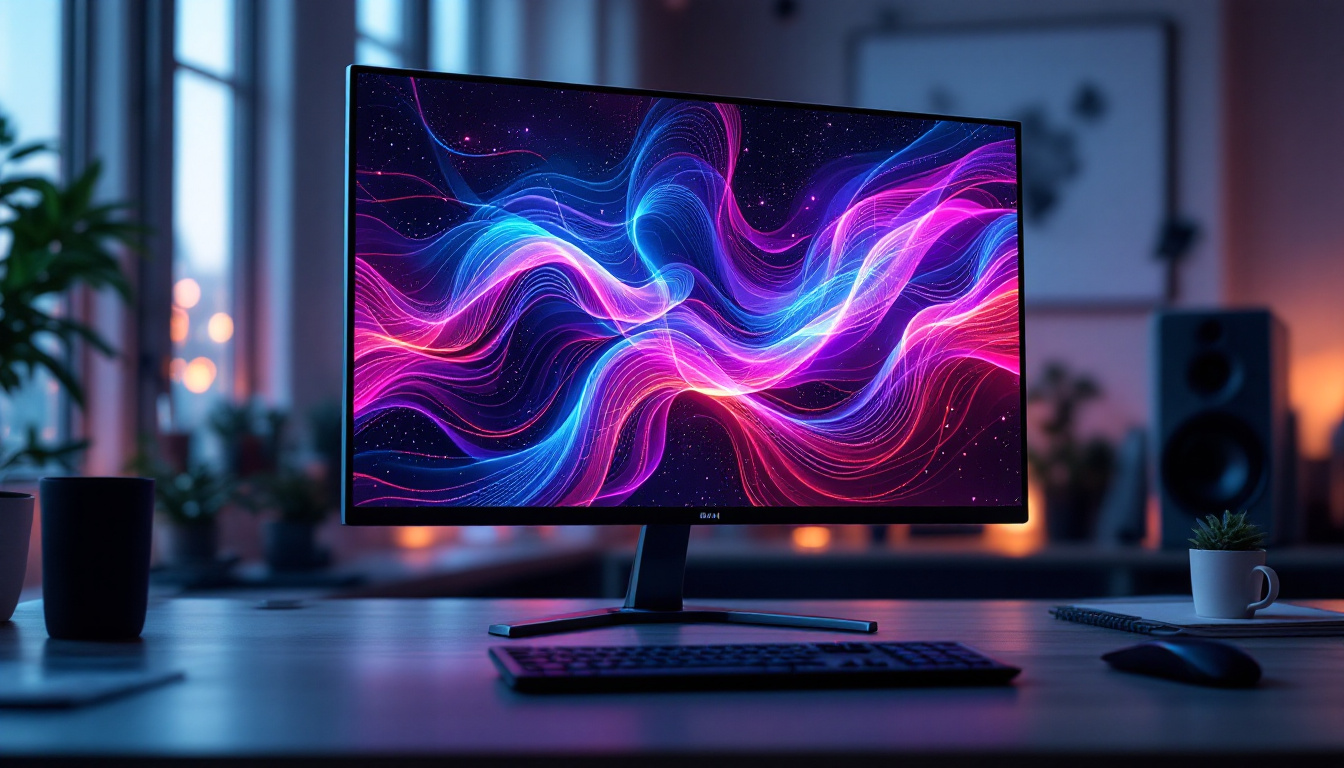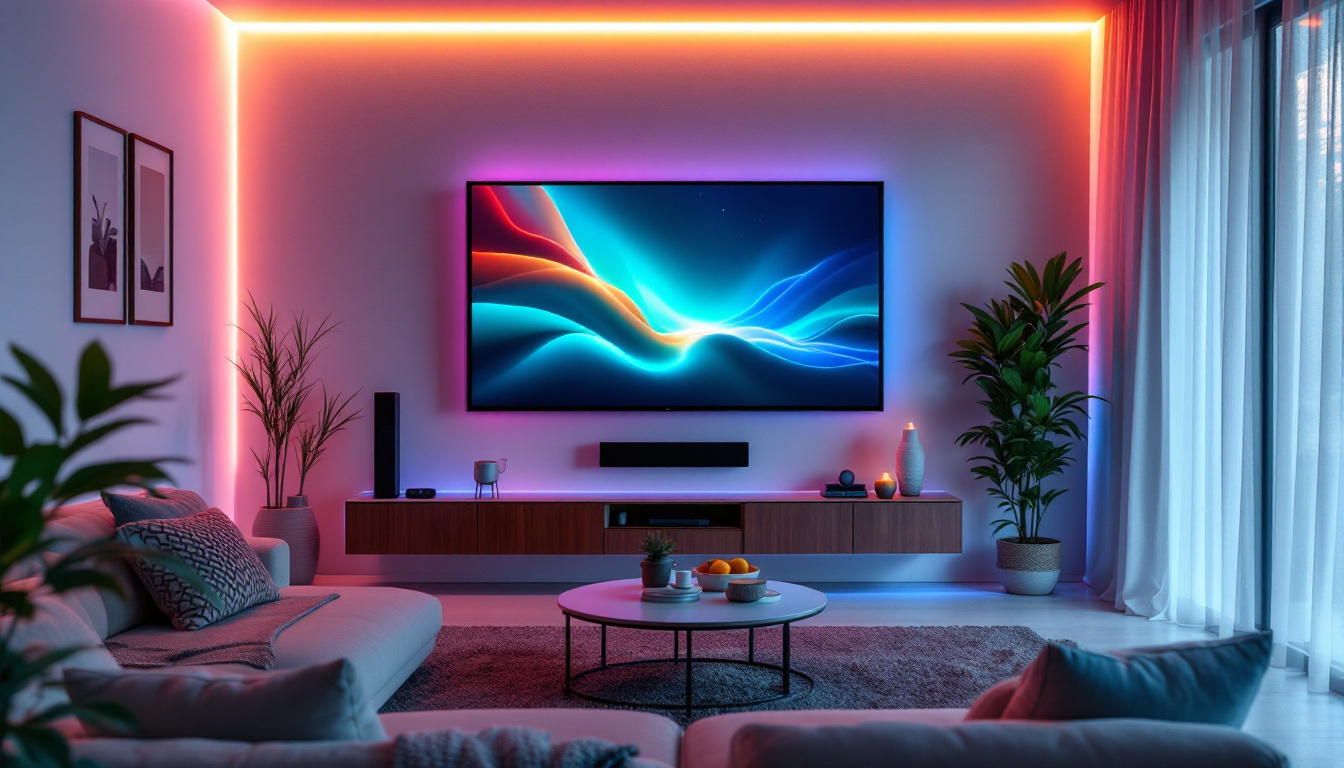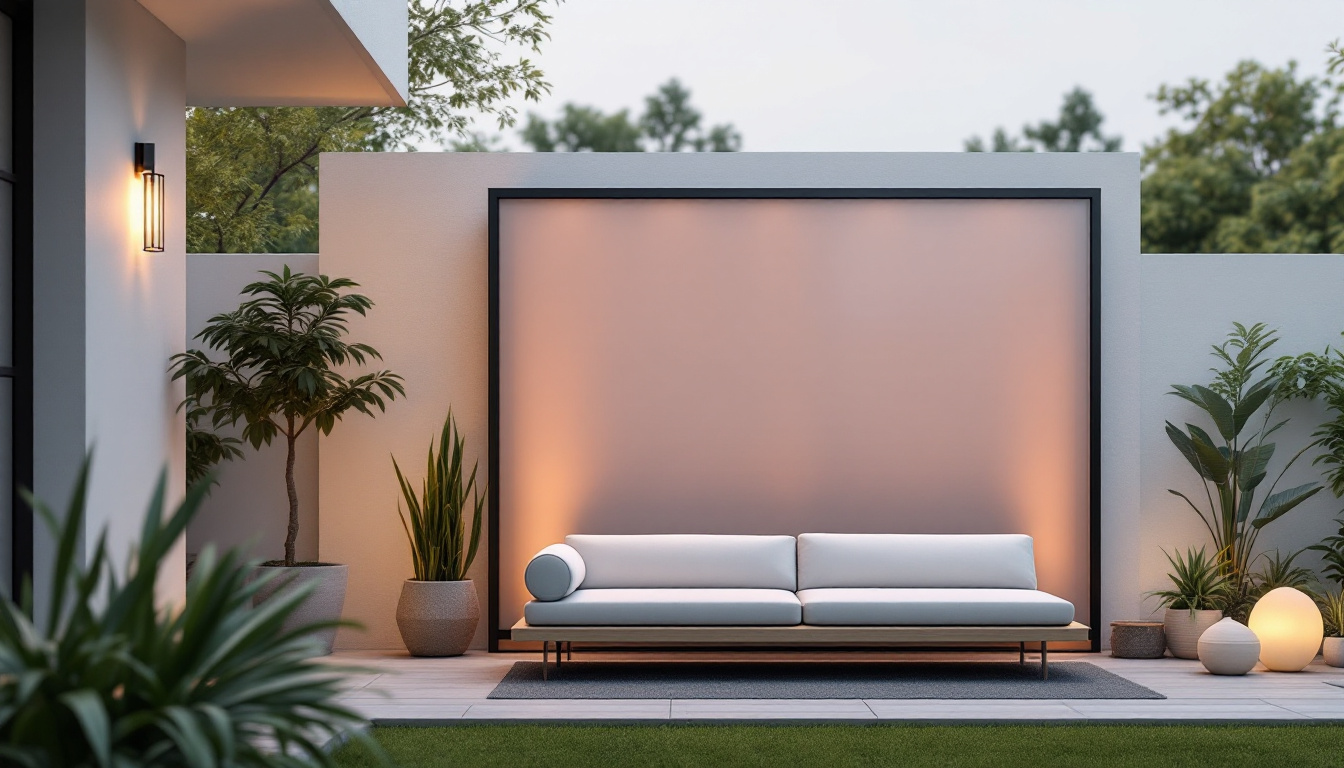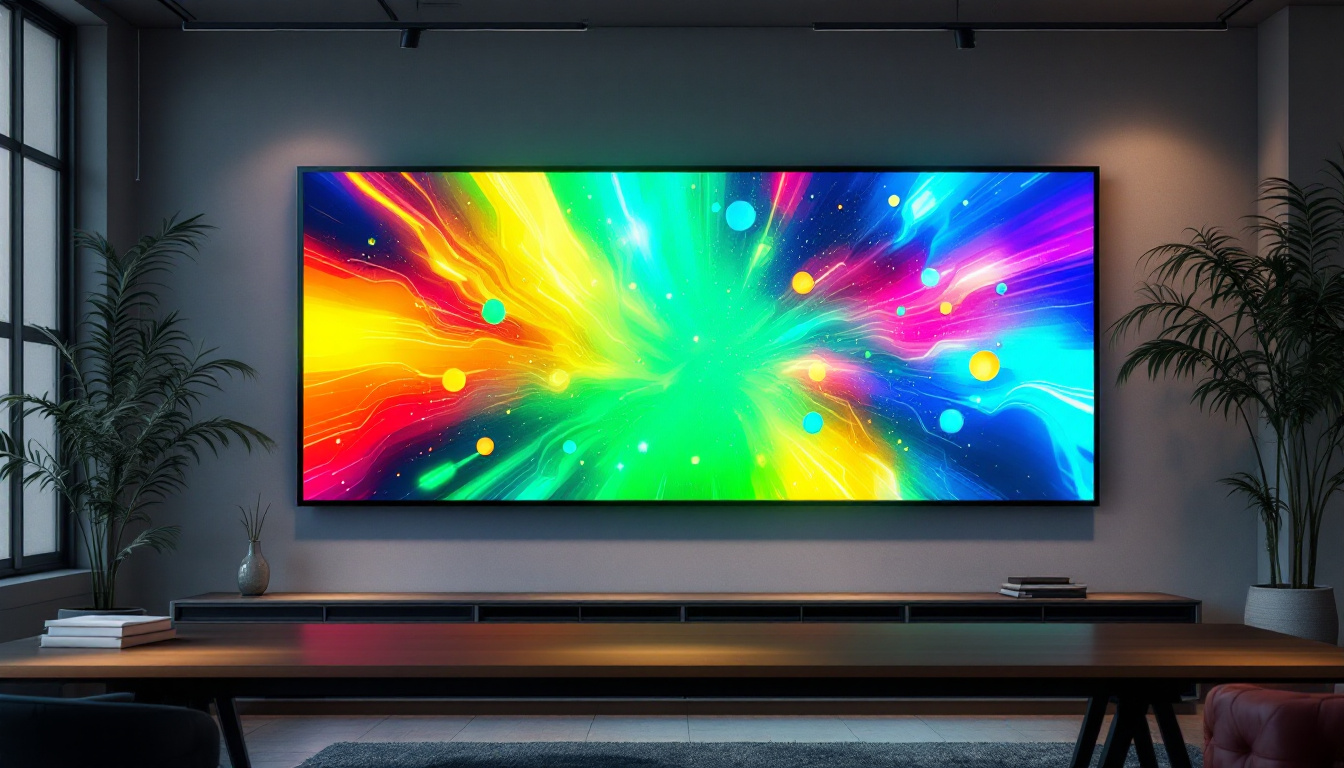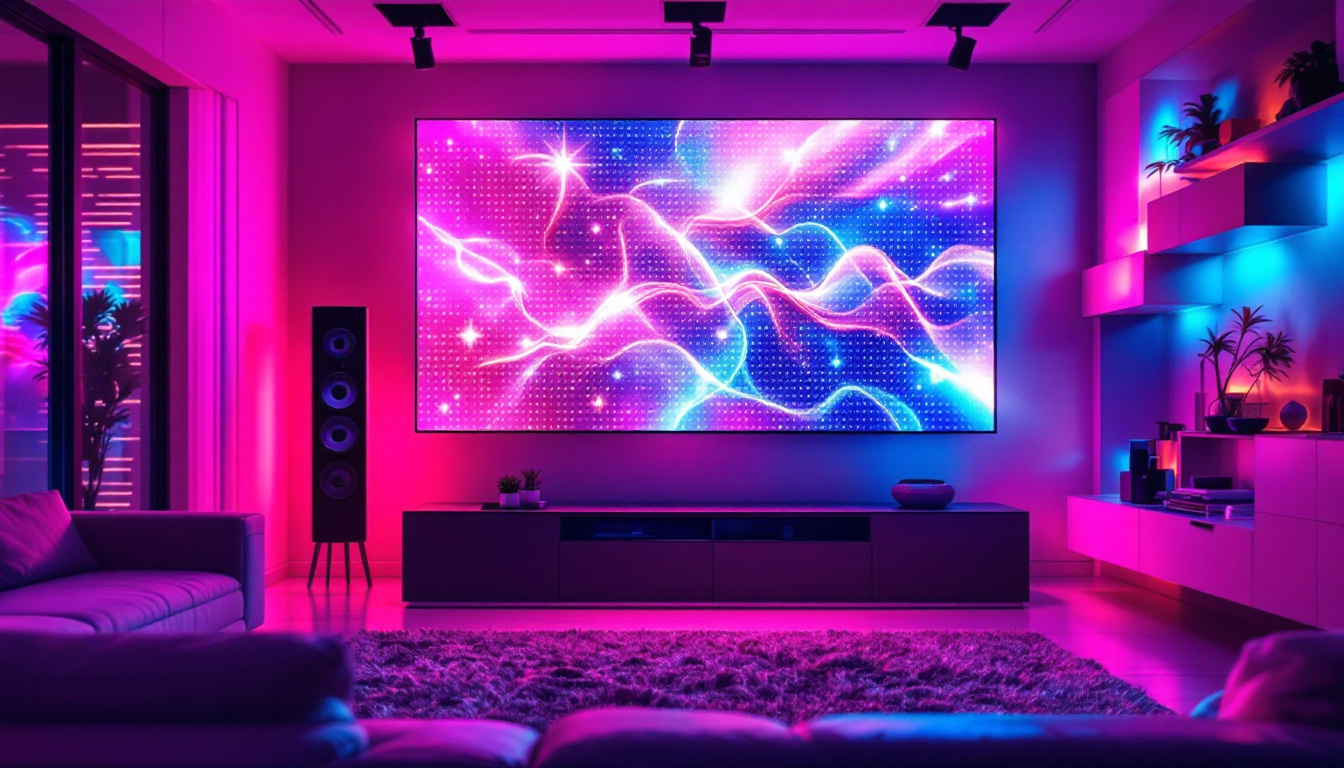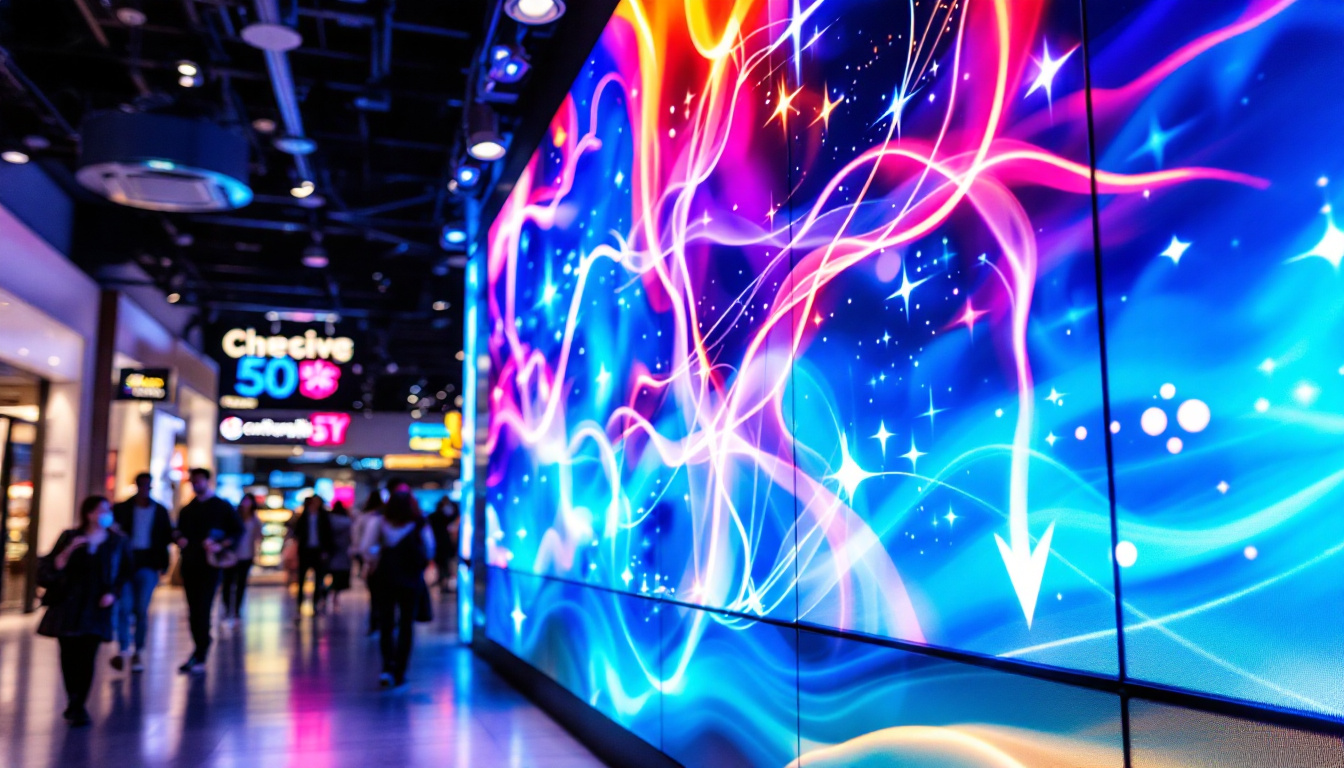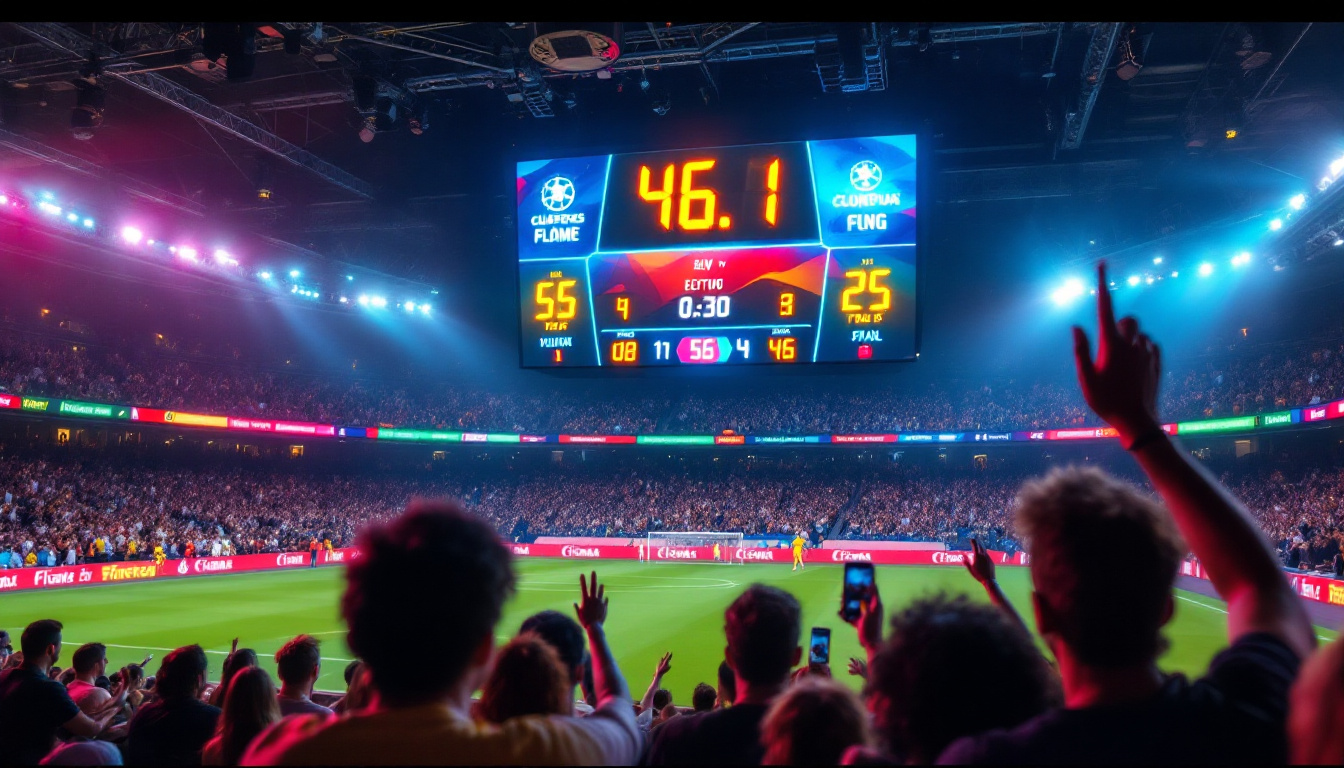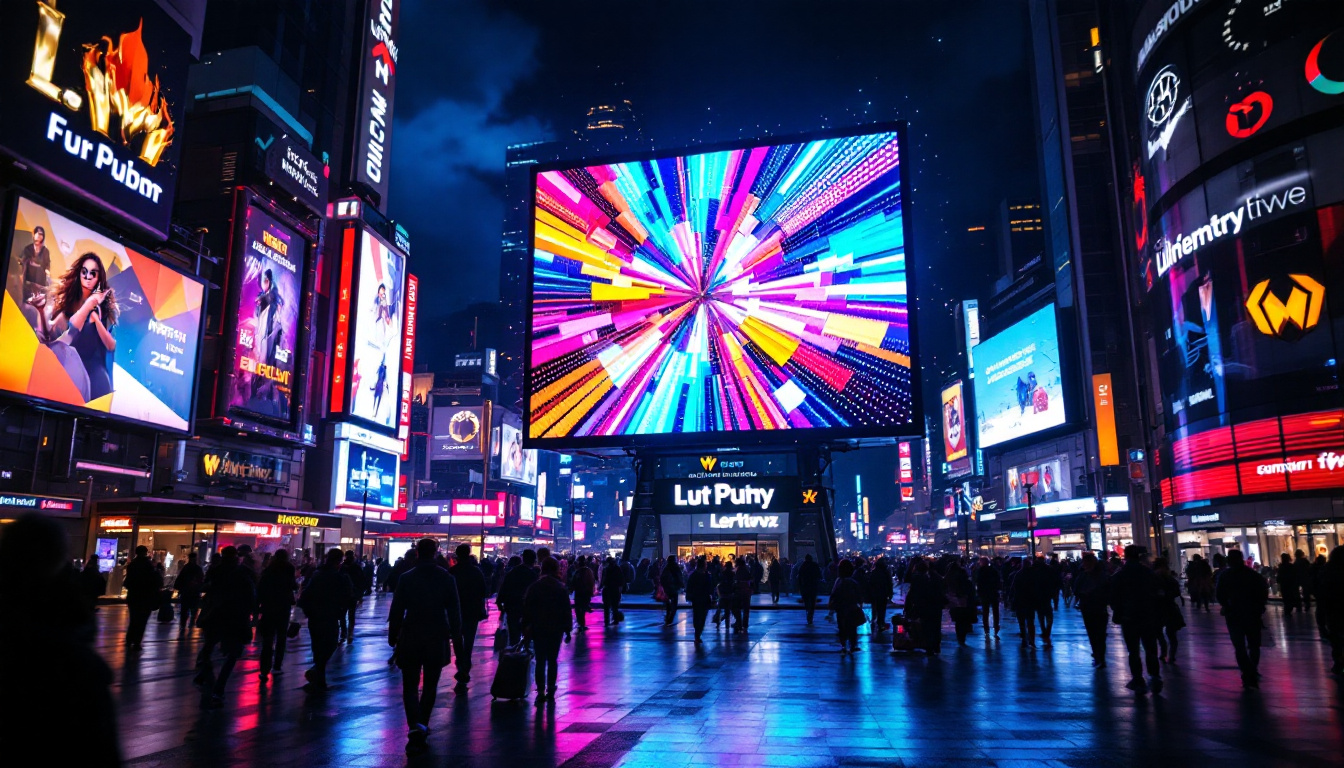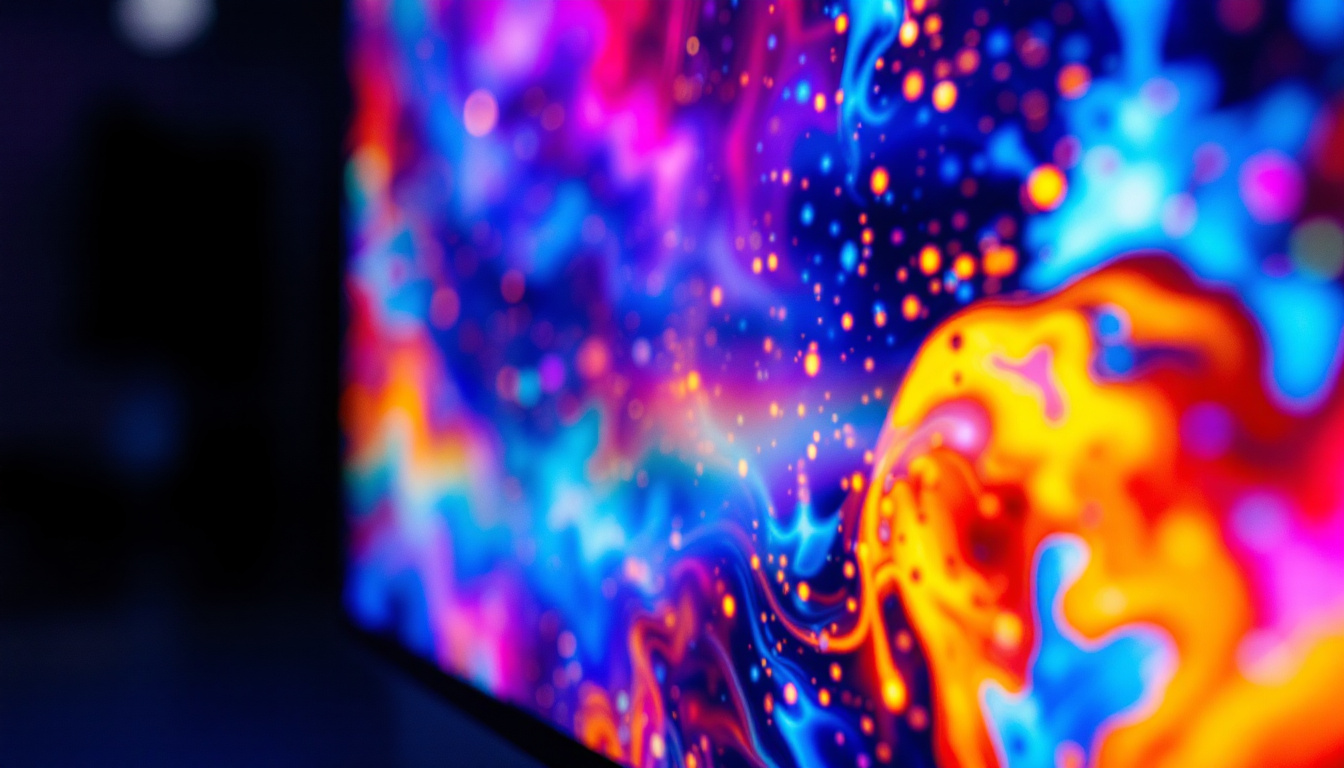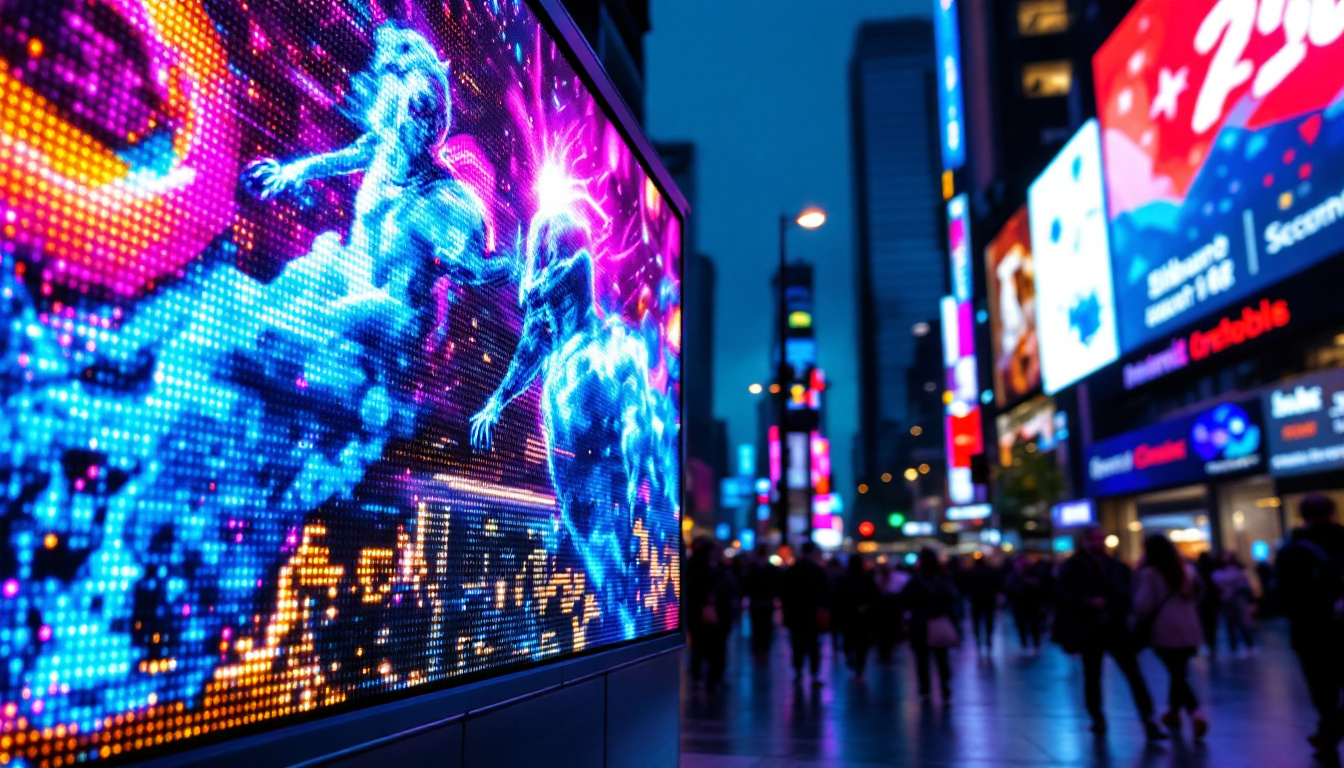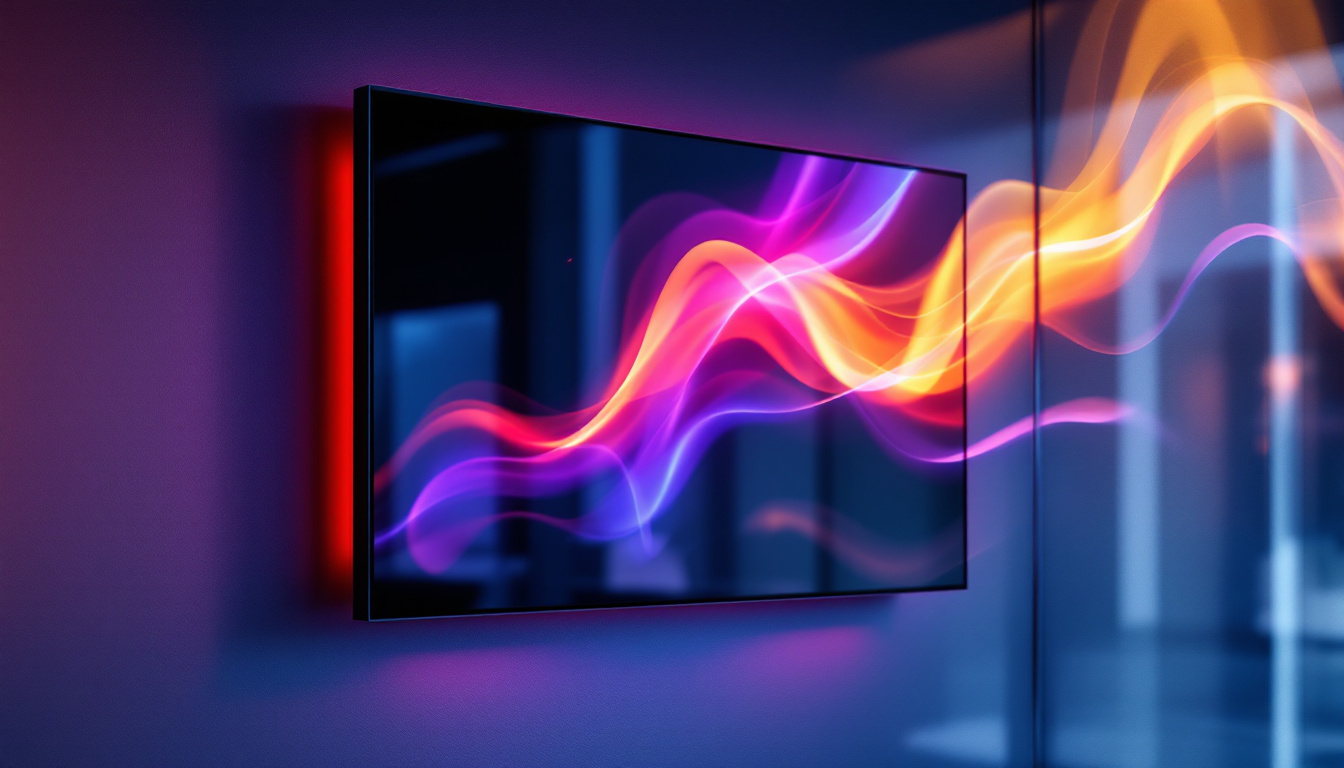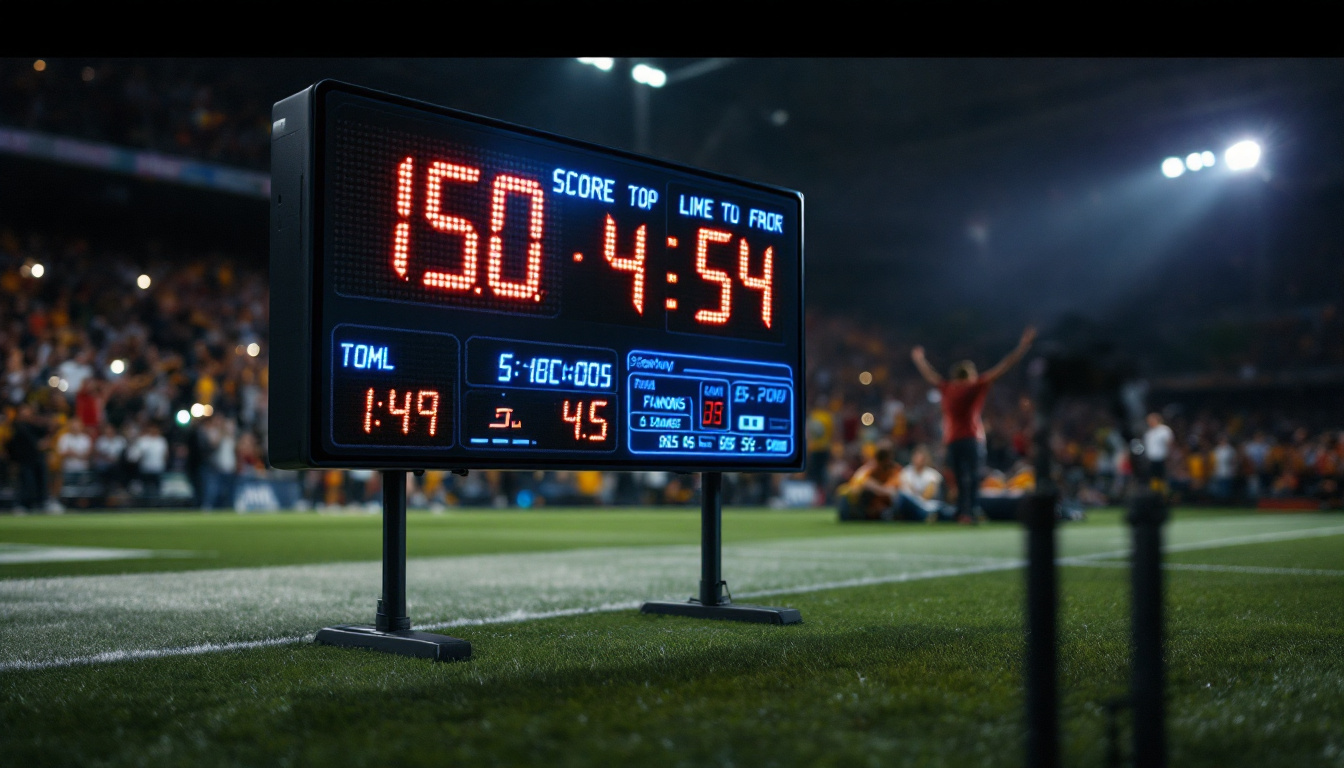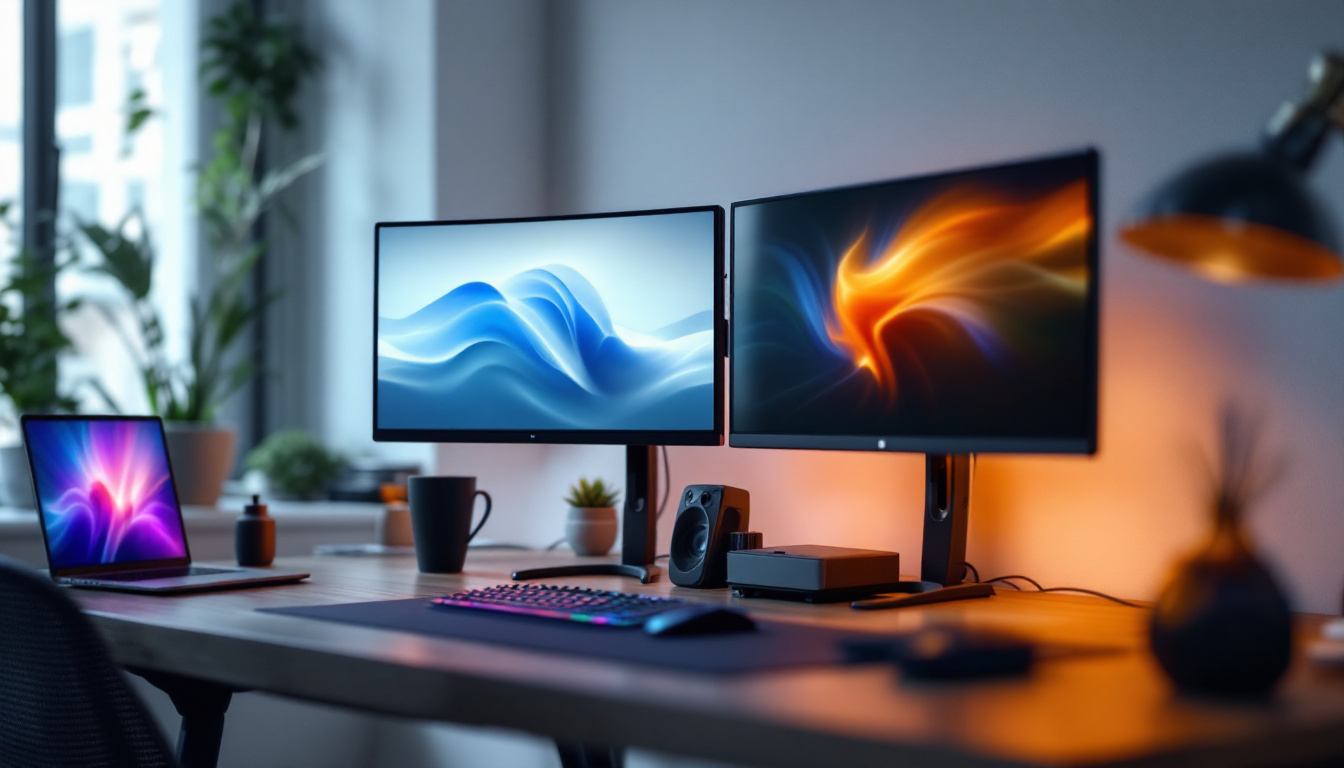In the ever-evolving world of technology, desktop monitors have undergone significant transformations. Among the various types of displays available, LED (Light Emitting Diode) displays stand out for their vibrant colors, energy efficiency, and sleek designs. This article delves into the intricacies of LED displays, exploring their functionality, advantages, and the various types available in the market today.
Understanding LED Technology
LED technology has revolutionized the way we perceive images on screens. Unlike traditional LCD monitors that use fluorescent backlighting, LED displays utilize tiny diodes that emit light, providing a more efficient and brighter display. This section will break down the fundamental principles behind LED technology.
How LED Displays Work
At the core of LED displays is the concept of light emission. When an electric current passes through a semiconductor material, it excites the atoms and causes them to emit light. This phenomenon is known as electroluminescence. In LED monitors, these diodes are arranged in a grid, allowing for precise control over brightness and color.
LED displays can be categorized into two main types: edge-lit and backlit. Edge-lit LEDs are positioned along the edges of the screen, providing illumination to the entire display. In contrast, backlit LEDs are placed directly behind the screen, allowing for more uniform brightness and better color accuracy. This distinction plays a crucial role in determining the overall performance of the monitor. Additionally, advancements in technology have led to the development of local dimming features in backlit displays, which enable specific areas of the screen to dim or brighten independently, further enhancing contrast ratios and overall image quality.
The Role of Color and Brightness
One of the standout features of LED displays is their ability to produce vibrant colors and high brightness levels. The color accuracy in LED monitors is achieved through the use of RGB (Red, Green, Blue) diodes. By combining these primary colors in varying intensities, a wide spectrum of colors can be produced, enhancing the visual experience. Furthermore, some high-end LED displays incorporate additional colors, such as yellow or cyan, to expand the color gamut even further, making them ideal for professional applications where color precision is paramount.
Brightness is another critical aspect of LED technology. With the capability to reach higher brightness levels compared to traditional displays, LED monitors are particularly effective in well-lit environments. This makes them suitable for a variety of applications, from gaming to professional graphic design. Moreover, the increased brightness not only improves visibility in bright settings but also enhances the dynamic range of images, allowing for deeper blacks and more luminous highlights. This characteristic is especially beneficial for HDR (High Dynamic Range) content, which demands a higher level of brightness and contrast to deliver a truly immersive viewing experience. As a result, LED technology continues to push the boundaries of what is possible in visual displays, catering to both casual users and professionals alike.
Advantages of LED Displays
LED displays offer numerous advantages over their predecessors, making them a popular choice among consumers and professionals alike. Understanding these benefits can help in making informed decisions when selecting a monitor.
Energy Efficiency
One of the most compelling advantages of LED displays is their energy efficiency. Compared to traditional LCDs and CRTs, LED monitors consume significantly less power. This not only translates to lower electricity bills but also contributes to a reduced carbon footprint. For businesses and individuals alike, this efficiency is a crucial factor in sustainability efforts.
Improved Lifespan
LED displays are known for their longevity. Typically, an LED monitor can last anywhere from 30,000 to 50,000 hours of use, depending on the quality of the components and usage conditions. This extended lifespan reduces the need for frequent replacements, making them a cost-effective option in the long run.
Enhanced Visual Quality
The visual quality of LED displays is another significant advantage. With higher contrast ratios and better color reproduction, LED monitors provide a more immersive viewing experience. This is particularly beneficial for activities that demand accuracy, such as photo editing or video production. The sharpness and clarity of images can be a game-changer for professionals in creative fields.
Types of LED Displays
The market offers a variety of LED displays, each designed to cater to specific needs and preferences. Understanding the different types can help users choose the right monitor for their requirements.
Standard LED Monitors
Standard LED monitors are the most common type found in homes and offices. They are versatile and suitable for a wide range of tasks, from everyday computing to casual gaming. These monitors typically feature a resolution of 1080p, providing a good balance between performance and affordability.
4K LED Monitors
For those seeking superior image quality, 4K LED monitors offer four times the resolution of standard 1080p displays. This increased pixel density results in sharper images and finer details, making them ideal for graphic designers, video editors, and gamers who desire the best visual experience. However, it’s important to note that 4K monitors may require more powerful graphics cards to fully utilize their capabilities.
Curved LED Monitors
Curved LED monitors have gained popularity in recent years, particularly among gamers and multimedia enthusiasts. The curvature of the screen creates a more immersive experience by wrapping the display around the viewer’s field of vision. This design can enhance depth perception and reduce glare, making it easier to focus on the content without distractions.
Choosing the Right LED Monitor
Selecting the right LED monitor involves considering various factors that align with individual needs and preferences. Here are some key aspects to keep in mind during the decision-making process.
Resolution
Resolution is one of the most critical factors when choosing a monitor. Higher resolutions provide better image clarity and detail. For general use, a 1080p resolution is often sufficient, but for professional work or gaming, a 4K resolution is recommended. Understanding the intended use can guide the choice of resolution.
Screen Size
The size of the monitor can significantly impact the viewing experience. Larger screens are beneficial for multitasking, allowing users to have multiple windows open simultaneously. However, it’s essential to consider the available space and the distance from which the monitor will be viewed. A 27-inch monitor may be ideal for a desktop setup, while a 32-inch monitor could be more suitable for a home theater environment.
Refresh Rate and Response Time
For gamers and those who engage in fast-paced activities, refresh rate and response time are crucial specifications. A higher refresh rate, measured in hertz (Hz), results in smoother motion on the screen. Similarly, a lower response time, measured in milliseconds (ms), reduces motion blur. Monitors with a refresh rate of 144Hz or higher and a response time of 5ms or lower are ideal for gaming.
Potential Drawbacks of LED Displays
While LED displays offer numerous benefits, they are not without their drawbacks. Understanding these limitations can help users make a balanced decision.
Cost Considerations
LED monitors, particularly those with advanced features such as 4K resolution or high refresh rates, can be more expensive than traditional displays. While the investment may be justified for professionals and gamers, casual users may find it challenging to justify the higher price point.
Viewing Angles
Another potential drawback of LED displays is the limited viewing angles. While some high-end models have improved in this area, many LED monitors may exhibit color distortion or brightness loss when viewed from extreme angles. This can be a concern in collaborative environments where multiple people need to view the screen simultaneously.
Blue Light Emission
LED displays emit blue light, which can contribute to eye strain and discomfort during prolonged use. Many users experience symptoms such as dry eyes, headaches, and fatigue. To mitigate these effects, it is advisable to take regular breaks, adjust screen brightness, and consider using blue light filter applications.
Future of LED Display Technology
The future of LED display technology looks promising, with ongoing advancements aimed at enhancing performance and user experience. Innovations in this field are expected to address some of the current limitations while introducing new features.
MicroLED Technology
One of the most exciting developments is MicroLED technology, which utilizes tiny micro-sized LEDs to create displays. This technology promises to deliver better brightness, contrast, and energy efficiency than traditional LED displays. MicroLEDs have the potential to revolutionize the market, offering even thinner and lighter screens without compromising on quality.
OLED vs. LED
Another area of interest is the competition between OLED (Organic Light Emitting Diode) and LED technologies. While OLED displays are known for their superior color accuracy and deeper blacks, LED displays remain more affordable and energy-efficient. As both technologies continue to evolve, the choice between them will depend on user preferences and specific use cases.
Smart Features Integration
As smart technology becomes increasingly integrated into everyday devices, LED monitors are likely to follow suit. Features such as built-in streaming applications, voice control, and enhanced connectivity options may become standard in future models, making monitors more versatile and user-friendly.
Conclusion
LED displays have transformed the landscape of desktop monitors, offering a blend of vibrant visuals, energy efficiency, and longevity. With various types available, from standard to 4K and curved models, there is an LED monitor to suit every need. While there are some drawbacks, the advantages often outweigh them, especially for those who prioritize visual quality and performance.
As technology continues to advance, the future of LED displays looks bright, with innovations on the horizon that promise even greater enhancements. Whether for professional use, gaming, or casual browsing, understanding LED technology and its benefits can empower users to make informed decisions in their quest for the perfect monitor.
Discover LumenMatrix LED Display Solutions
Ready to experience the pinnacle of LED display technology? LumenMatrix is at the forefront of innovation, offering a wide array of LED display solutions tailored to your unique needs. From captivating Indoor LED Wall Displays to dynamic Outdoor LED Wall Displays, and from mobile Vehicle LED Displays to sleek LED Poster Displays, our products are designed to revolutionize visual communication. Whether you’re looking to engage audiences with an LED Sports Display, make a statement with a Floor LED Display, or require a Custom LED Display solution, LumenMatrix has you covered. Elevate your brand visibility and create unforgettable visual experiences with our All-in-One and LED Transparent Displays. Check out LumenMatrix LED Display Solutions today and empower your business to communicate with impact and clarity.

